Alcohol
Cheese Whey Wine
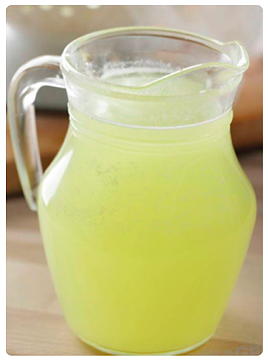
cheese whey
source: cheesemaking.com
One possibility was to dehydrate it into a protein powder that could be fed to livestock, or bodybuilders. But in the mid-1970s, researchers at Oregon State University hit upon a potentially more lucrative use: making wine out of whey. They detailed their study in a pamphlet titled “Utilization of Cheese Whey for Wine Production.”
The reason this was possible is because the lactose in whey will ferment, if one uses the right microorganisms. The end result was a whey wine that, according to the researchers, "was acceptable to a great majority of tasters, who preferred it slightly sweet.” Which doesn't sound exactly like a glowing recommendation. Nevertheless, the researchers were enthusiastic about the potential of whey wine:
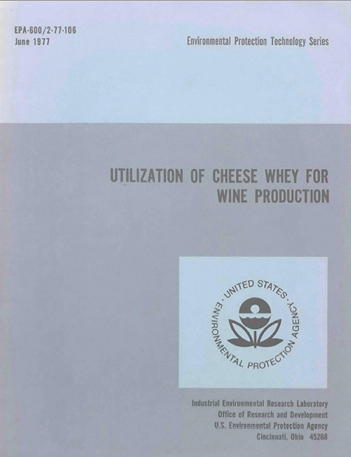
It doesn't seem that their dream of raking in the big bucks with whey wine ever panned out. The idea of whey-based alcohol products is still kicking around, however. Various gins and vodkas made from whey can be found, such as Bertha's Revenge Irish Milk Gin or Sheep Whey Gin. But I can't find any wines being made from whey.
There's more info about whey-based spirits at SevenFifty.com, and here's an article about an effort to make whey beer.
Posted By: Alex - Thu Sep 05, 2019 -
Comments (1)
Category: Food, Inebriation and Intoxicants, 1970s, Alcohol
Follies of the Madmen #442
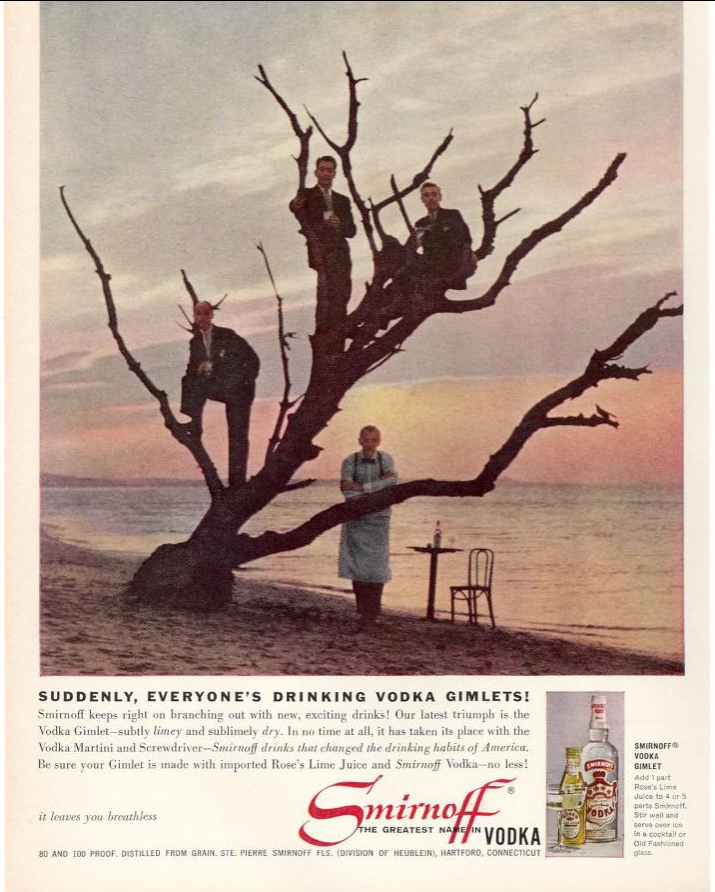
Those who drink our booze are eccentric tree-climbing idiots.
Source.
Posted By: Paul - Sat Aug 31, 2019 -
Comments (2)
Category: Bad Habits, Neuroses and Psychoses, Business, Advertising, 1960s, Alcohol
Signs of Health
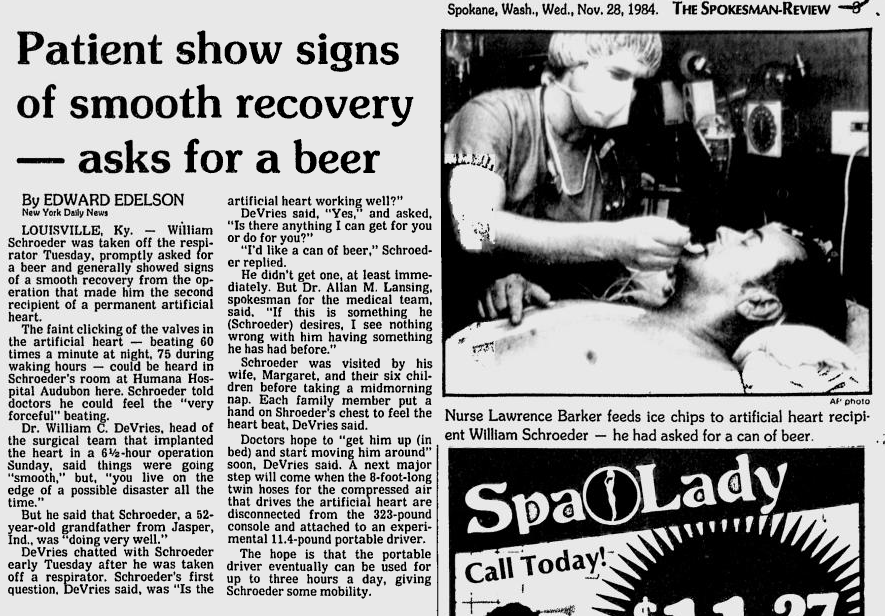
Alas, this positive sign was not an accurate forecast of the fate of William Schroeder.
Article source.
Posted By: Paul - Wed Jul 10, 2019 -
Comments (2)
Category: Body, Death, Health, Surgery, 1980s, Alcohol
The Breath of a Nation
This is so clever and visually surreal that's it's hard to believe it was not made yesterday.Lots more info here.
Posted By: Paul - Fri May 10, 2019 -
Comments (0)
Category: Surrealism, Cartoons, Marriage, 1910s, Alcohol
Cabin Pressure
Cabin Pressure from Matthew Lee on Vimeo.
Posted By: Paul - Sat Apr 20, 2019 -
Comments (1)
Category: Antisocial Activities, Bad Habits, Neuroses and Psychoses, Death, Elderly and Seniors, Experts and Authority Figures, Regulations, Stop-motion Animation, Air Travel and Airlines, Alcohol, Goofs and Screw-ups
Lodi Grape Festival Queen
Here is the first holder of the honor.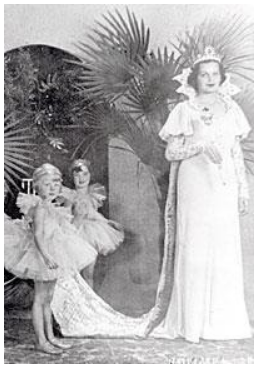
Read article here.
The festival continues to this day, but I find no reference to a queen.
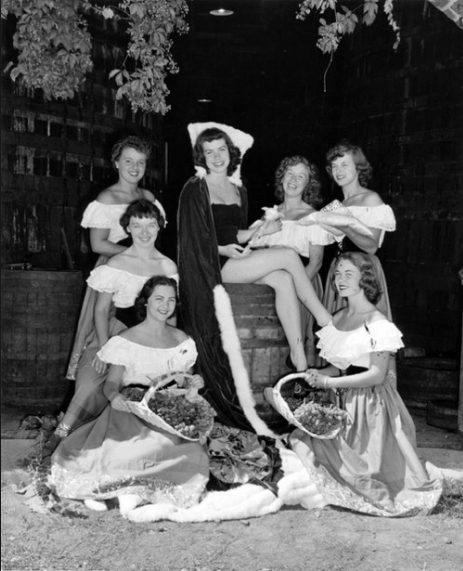
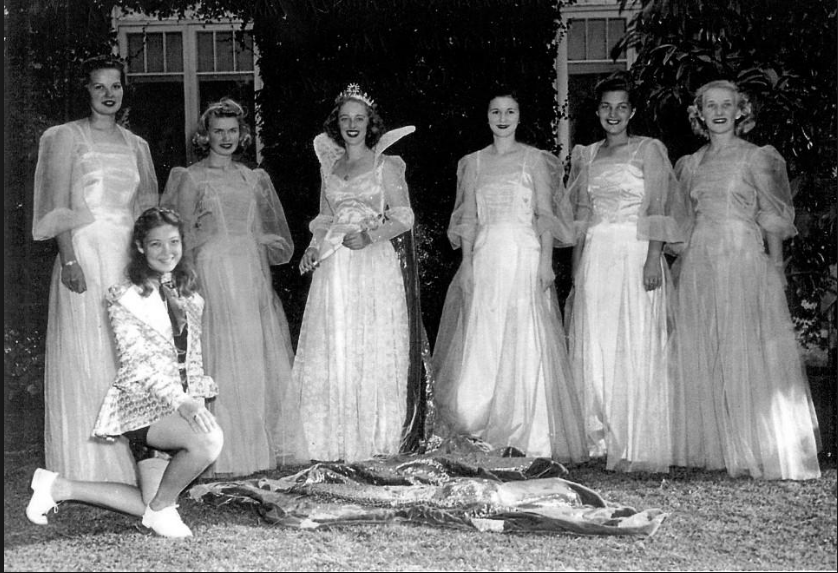
Posted By: Paul - Fri Apr 12, 2019 -
Comments (5)
Category: Beauty, Ugliness and Other Aesthetic Issues, Contests, Races and Other Competitions, Food, Regionalism, 1930s, Alcohol
Follies of the Madmen #421
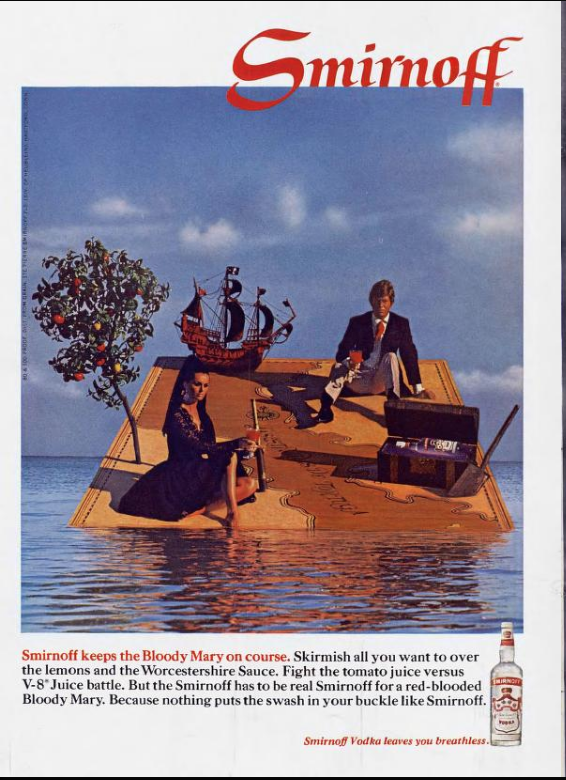
Perfect today for our climate-change world!
Posted By: Paul - Sun Apr 07, 2019 -
Comments (0)
Category: Armageddon and Apocalypses, Business, Advertising, Nature, 1960s, Alcohol
Follies of the Madmen #418

Nothing said about the quality of the men (or women) attracted by Colt 45.
Source of ad.
Posted By: Paul - Sat Mar 16, 2019 -
Comments (4)
Category: Business, Advertising, 1960s, Alcohol
Hostetter’s Bitters
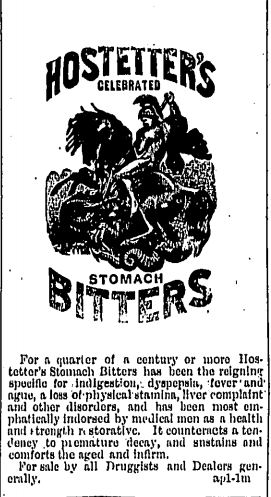
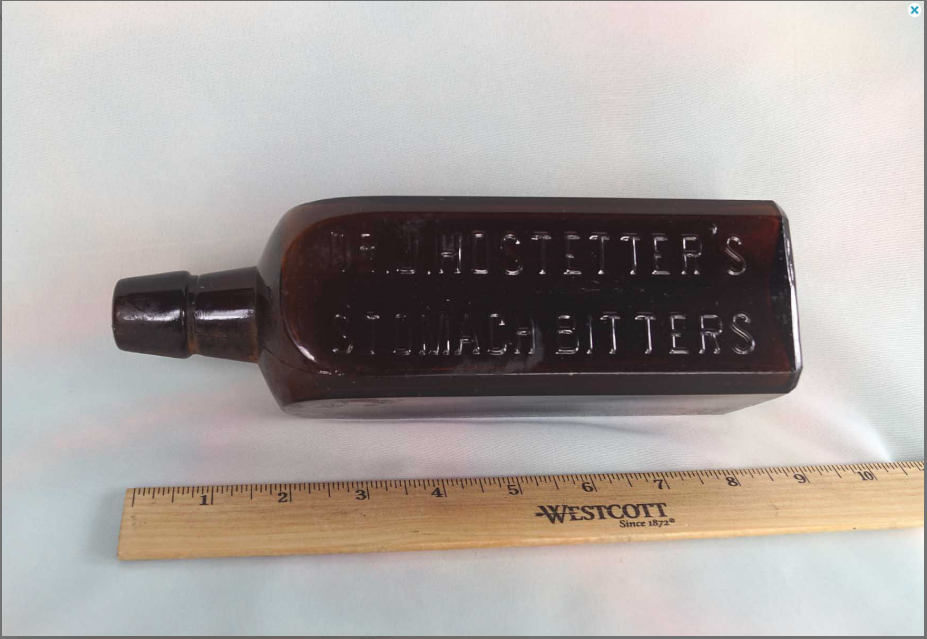
Hostetter's "Celebrated" Bitters was a nostrum developed by Dr. Jacob Hostetter of Lancaster, Pennsylvania. His son, David Hostetter, put the formula into large scale production in 1853 and it soon became a national best-seller. During the Civil War, Dr. J. Hostetter's Stomach Bitters was sold to soldiers as "a positive protective against the fatal maladies of the Southern swamps, and the poisonous tendency of the impure rivers and bayous." The original formula was about 47% alcohol -- 94 Proof! The amount of alcohol was so high that it was served in Alaskan saloons by the glass. Hostetter sweetened the alcohol with sugar to which he added a few aromatic oils (anise, coriander, etc.) and vegetable bitters (cinchona, gentian, etc.) to give it a medicinal flavor. From 1954 to 1958, when it was no longer marketed, the product was known as Hostetter Tonic.
More info here.
Posted By: Paul - Thu Feb 21, 2019 -
Comments (3)
Category: Antiques, Anachronisms and Throwbacks, Advertising, Patent Medicines, Nostrums and Snake Oil, Nineteenth Century, Twentieth Century, Alcohol
Hangovers Due to Guilty Conscience
In 1973, Professor Robert Gunn advanced this theory.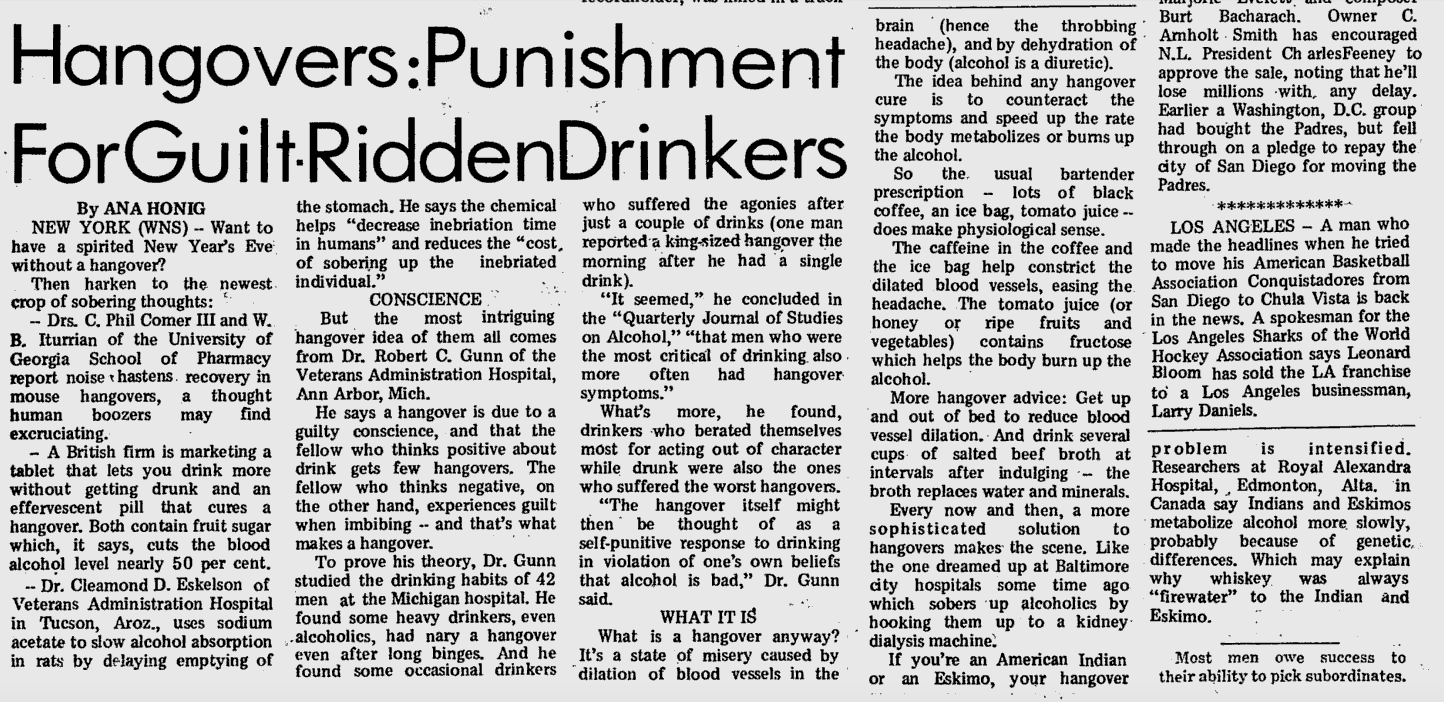
Twenty years later, he was still pursuing the idea, as you can see in the scientific paper at the link.
To reappraise a prior study of hangover signs and psychosocial factors among a sample of current drinkers, we excluded a subgroup termed Sobers, who report "never" being "tipsy, high or drunk." The non-sober current drinkers then formed the sample for this report (N = 1104). About 23% of this group reported no hangover signs regardless of their intake level or gender, and the rest showed no sex differences for any of 8 hangover signs reported. Using multiple regression, including ethanol, age and weight, it was found that psychosocial variables contributed independently in predicting to hangover for both men and women in this order: (1) guilt about drinking; (2) neuroticism; (3) angry or (4) depressed when high/drunk and (5) negative life events. For men only, ethanol intake was also significant; for women only, being younger and reporting first being high/drunk at a relatively earlier age were also predictors of the Hangover Sign Index (HSI). These multiple predictors accounted for 5-10 times more of the hangover variance than alcohol use alone: for men, R = 0.43, R2 = 19%; and for women, R = 0.46, R2 = 21%. The findings suggest that hangover signs are a function of age, sex, ethanol level and psychosocial factors.
Posted By: Paul - Sun Feb 10, 2019 -
Comments (1)
Category: Science, Experiments, Psychology, 1970s, 1990s, Pain, Self-inflicted and Otherwise, Alcohol

| Who We Are |
|---|
| Alex Boese Alex is the creator and curator of the Museum of Hoaxes. He's also the author of various weird, non-fiction, science-themed books such as Elephants on Acid and Psychedelic Apes. Paul Di Filippo Paul has been paid to put weird ideas into fictional form for over thirty years, in his career as a noted science fiction writer. He has recently begun blogging on many curious topics with three fellow writers at The Inferior 4+1. Contact Us |




